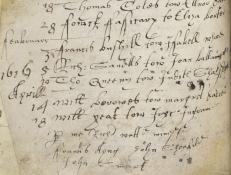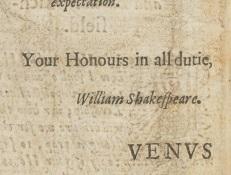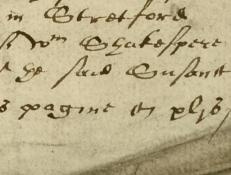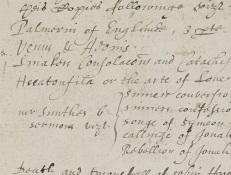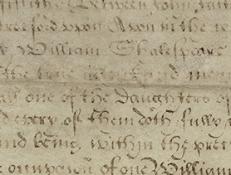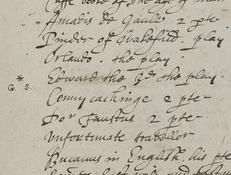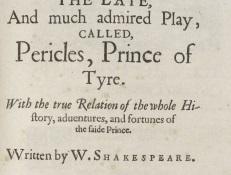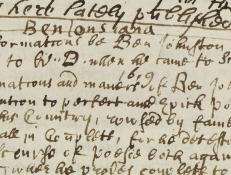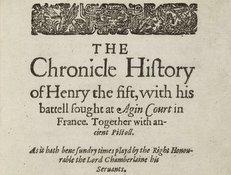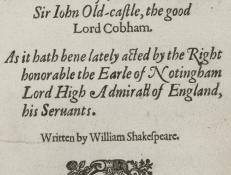To view a sortable list, please visit the Resource
All Documents
February 10, 1616
Judith, William and Anne Shakespeare’s younger daughter, married Thomas Quiney on February 10, 1616, according to the Holy Trinity Church parish register. Next to the entry, an “X” added by a later hand highlights its significance.
1617
William Stansby printed the eleventh edition of Venus and Adonis for William Barrett in 1617. William Leake had transferred the right to publish Venus and Adonis to Barrett earlier that year on February 16, 1617.
April 18, 1617
SHAKESPEARE DOCUMENTED IS STILL GROWING! Descriptive content and transcriptions will continue to be added, updated and expanded. Check back for regular updates!
February 16, 1617
Venus and Adonis was the first of Shakespeare's works to be entered into the Stationers' Register and to be printed. It was originally entered into Liber B on April 18, 1593, by Richard Field.
February 10, 1618
On February 10, 1618, five years after William Shakespeare and his associates William Johnson, John Jackson, and John Heminges agreed to purchase the Blackfriars Gatehouse in 1613, Shakespeare’s trustees transferred the title of the Gatehouse to two new trustees.
March 2, 1618
Edward III was originally entered in the Stationers' Register on December 1, 1595, by publisher Cuthbert Burby.
1619
The fourth edition of Pericles was published by Thomas Pavier and printed by William Jaggard in 1619. Pavier and Jaggard printed ten plays by or attributed to Shakespeare, now known to scholars as the Pavier quartos.
1619
SHAKESPEARE DOCUMENTED IS STILL GROWING! Descriptive content and transcriptions will continue to be added, updated and expanded. Check back for regular updates!
Printed as 1608, i.e. 1619
William Jaggard printed the third edition of Henry V, one of the infamous Pavier Quartos, for Thomas Pavier in 1619, though the title page says 1608. In 1619, Pavier and Jaggard published a set of ten works, either by Shakespeare or attributed to him.
Imprint 1600, i.e. 1619
The 1619 quarto of Sir John Oldcastle Part 1 is the first to attribute the play to Shakespeare, some three years after his death.

